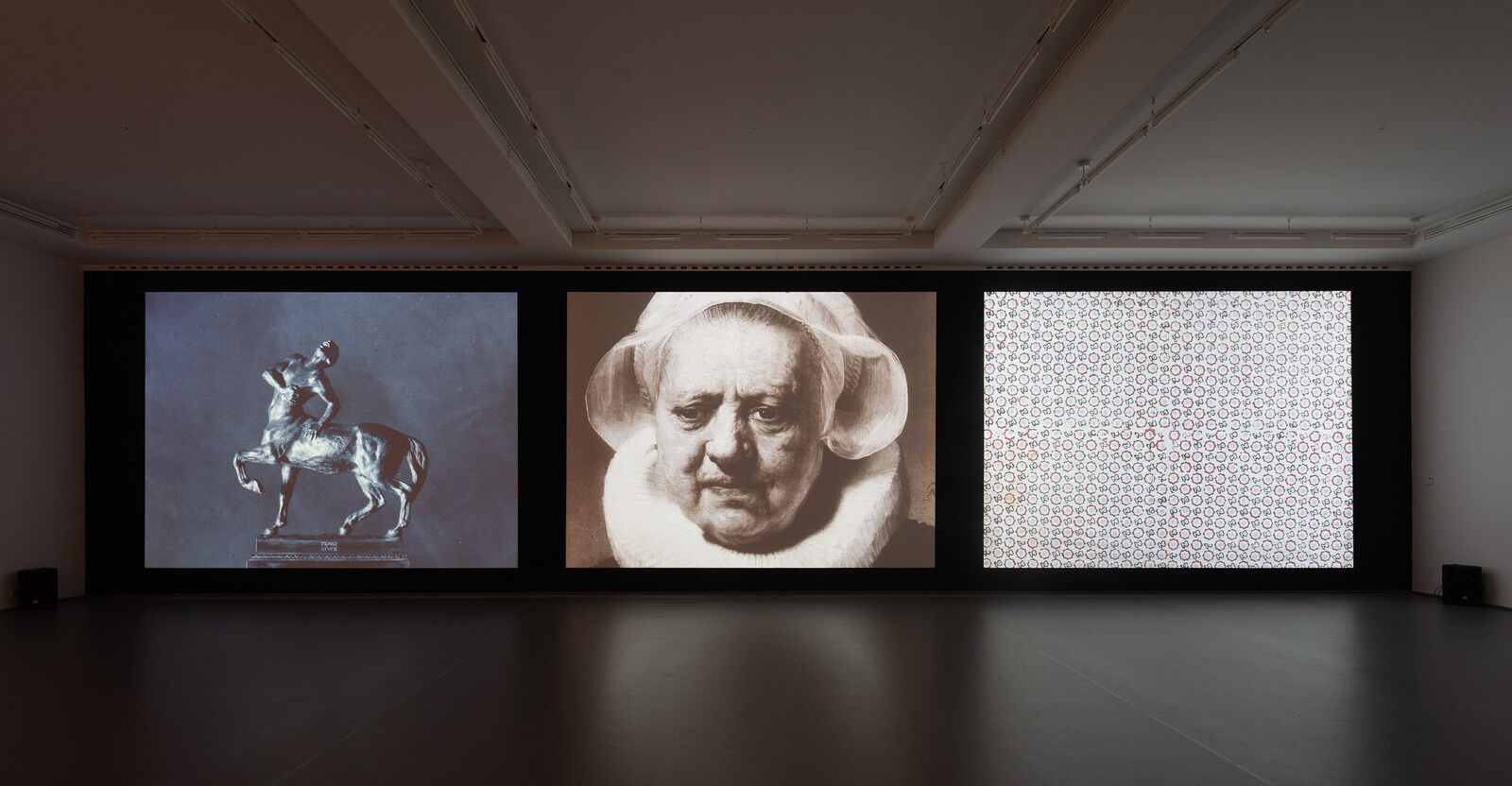suddenly, one could be just like the other
Collection Satellite #6
November 12, 2020–October 24, 2021
Kaiser Wilhelm Museum, Joseph-Beuys-Platz 1, 47798 Krefeld
Joseph-Beuys-Platz 1
47798 Krefeld
Germany
Hours: Tuesday–Sunday 11am–5pm,
Friday–Saturday 11am–6pm
T +49 2151 975580
kunstmuseen@krefeld.de
The Kunstmuseen Krefeld present the exhibition suddenly, one could be just like the other by the internationally renowned artist Marcel Odenbach at the Kaiser Wilhelm Museum through October 24, 2021. Two new works, a video projection and an large-scale installation, bear witness to the artist’s engagement with the museum’s Teaching and Prototype Collection. Odenbach has reassembled from his own perspective roughly 1,000 motifs from this analog image database, which encyclopedically collects works of art from all over the world. He thus reveals his own thought and work processes. As a result, the migration of images through temporal and geographical spaces, as well as current media-critical considerations, become the subject of his work. The exhibition was conceived as part of the “Collection Satellites” series, with which the collection of the Kunstmuseen Krefeld is continually updated.
Images have shaped our everyday life and our knowledge culture not only since the digital age. As early as 1900, when the Teaching and Prototype Collection with thousands of illustrations of works of art was established in the Kaiser Wilhelm Museum, pictures were mass-produced goods and required a critical view. Questions about the handling of images, about the transformation of their stories, their technical constitution, and their cognitive functions (perceive, remember, know, etc.) are still valid to this day. “With Marcel Odenbach, we have won an artist who repeatedly scrutinizes images—both historical and contemporary—in his work and reinterprets them in new ways,” explains museum director Katia Baudin. “As an art historian, he was thrilled to be able to bring this treasure of images to light together with us.”
Marcel Odenbach has taken on the role of a visitor and user of the reading room in the Kaiser Wilhelm Museum, the very site where the reproductions were once kept, and has created two new works with this visual material.
The overwhelming power of images and the media competence necessary to cope with the sheer quantity of visual material can be experienced in a collage-like installation. Odenbach photocopied hundreds of the image reproductions from the Teaching and Prototype Collection and complemented this flood of images with original furniture and copies of paintings. The result is an overall image that both reflects the historical atmosphere around 1900 in the reading room – which was located in this very exhibition space – and questions the fundamental way we deal with images.
Something different takes place in the video projection Verzettelungen (Dispersals): Here, Odenbach has taken over the direction of the images. With only 129 motifs, he focuses on the non-European part of art history as it is found in the encyclopedic Teaching and Prototype Collection. Inspired by Aby Warburg’s (1866–1929) method of comparative visual analysis, Odenbach compiles combinations of images in which motifs, themes, stylistic features, and pictorial formulae correspond. They flow through the room as monumental images and constantly challenge us to compare them.
A so-called teaching and prototype collection is an educational aid that was used by academies and museums of applied arts and crafts, as well as in the study of art, until the early 20th century. Reproductions of original works of art from all fields, countries, and epochs serve as models to train the eye and the hand. The Teaching and Prototype Collection of the Kaiser Wilhelm Museum was created by the first director Friedrich Deneken. 255 boxes contain roughly 4,000 motifs from the history of art from antiquity to the late 19th century. The numerous reproductions were available to all visitors in the reading room of the Kaiser Wilhelm Museum. “This cultural asset was almost forgotten,” explains curator Sylvia Martin. “I always had this large collection at the back of my mind. The “Collection Satellites series” was then the ideal setting, and Marcel Odenbach was the ideal artist to rediscover the Collection.”
Marcel Odenbach (b. 1953 in Cologne, Germany, lives in Berlin and Cape Coast, Ghana, and works in Cologne) is one of the most internationally renowned video artists of the second generation. He studied Architecture, Art History, and Semiotics at the Technical University of Aachen from 1974 to 1979. Since 1990, he has been teaching as Professor for Media Art at various academies and universities, currently at the Düsseldorf Academy of Arts. As an outstanding contemporary artist, Odenbach has been awarded the Wolfgang-Hahn-Prize 2021. The “Collection Satellites” project series was launched by Katia Baudin in 2018 to address the collection, architecture, and history of the museum from current perspectives. Twice a year, artists, designers, and architects are invited to develop new works in dialog with the museum and present these in an exhibition.
The Foundation for Art, Culture, and Social Projects of Sparda-Bank West supports the “Collection Satellites” series as official partner.
Publication
Marcel Odenbach. suddenly, one could be just like the other. Collection Satellite #6
Ed. Sylvia Martin, Katia Baudin
212 pages, German/English
Grass Publisher, Brauweiler 2021
ISBN: 978-3-946848-13-4
The catalog can be ordered by e-mail from servicekunstmuseen@krefeld.de or by phone at +49 2151 97558-137.
Press contact
servicekunstmuseen@krefeld.de



